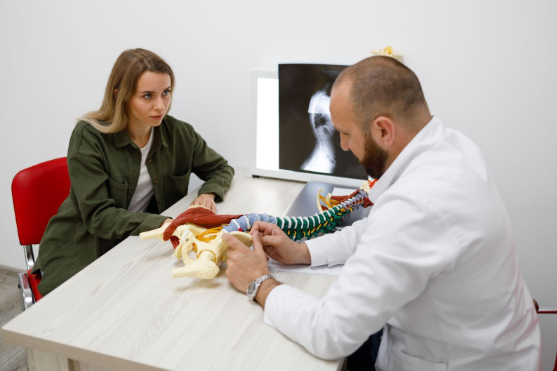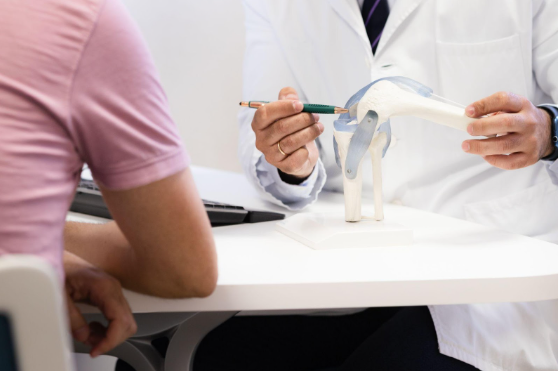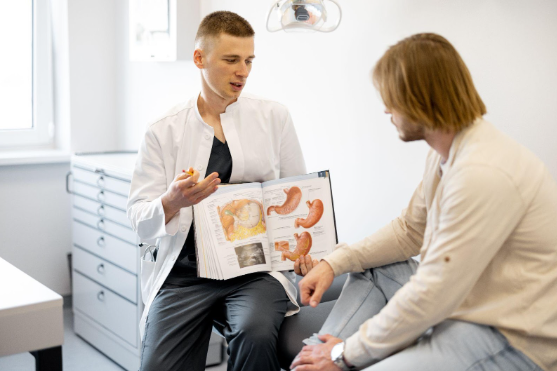
What Is Crohn’s Disease?
April 24, 2025
What is Amoxicillin Used For?
May 10, 2025What is a Flexible Sigmoidoscopy?

Flexible sigmoidoscopy is an outpatient endoscopic technique that enables the physicians to inspect the proximal parts of the sigmoid colon and rectum. It is very useful test in helping diagnose conditions like colorectal polyps, inflammation and features of colorectal cancer. Since the flexible sigmoidoscopy permits direct visualisation of the sigmoid colon and rectum, it plays an efficient role in identifying and confirming many gastrointestinal disorder diseases.
For more information you can check with Gastroenterology of New York City, a professional organization specializing in the field of gastroenterology.
Why is a Flexible Sigmoidoscopy Performed?
A flexible sigmoidoscopy is recommended for several reasons, including:
Screening for Colorectal Cancer: Identifying precancerous polyps and basic manifestations of cancer.
Identifying Gastrointestinal Symptoms: Differentiating origins of rectal bleeding, abdominal pain and chronic diarrhea.
Monitoring Existing Conditions: Monitoring exacerbation or remission of IBDs including Crohn’s disease and ulcerative colitis.
Follow-up after Treatment: Follow up examination to monitor for appearance of polyps or cancer after they have been removed.
How is a Flexible Sigmoidoscopy Performed?

Preparation for the Procedure
In order to be prepared for a colonoscopic examination, that involves a flexible sigmoidoscopy, bowel preparation is required. This typically involves:
- Dietary Adjustments: Low-fiber meals on the day before and the day of the procedure or possibly at least 48 hours before the procedure.
- Bowel Preparation: Administration of enemas, suppositories or taking of laxatives that enhance pointing out of the low part of the colon.
During the Procedure
- Positioning: Used in different position, specifically the patient lays on his or her side on an examination table.
- Insertion of the Scope: To examine the sigmoid colon the physician uses a thin, flexible tube with a video camera (sigmoidoscope).
- Visualization: The camera sends images to a monitor so that the physician can examine the lining of the colon.
- Air Insufflation: Carbon dioxide may be insufflated to extent the colon in order to gain better view.
Duration
The procedure is normally expected to take between 10 and 20 minutes.
What Conditions Can a Flexible Sigmoidoscopy Detect?
A flexible sigmoidoscopy is a powerful diagnostic tool for identifying:
Colorectal Polyps: Malignant neoplasmic growths that may be benign or pre-cancerous.
Colorectal Cancer: Because of this the key advantage of early detection is its ability to enhance treatment outcomes.
Inflammatory Bowel Disease (IBD): Proliferative conditions such as Crohn’s disease and ulcerative colitis.
Diverticulosis: Sacculations in the wall of the colon.
Rectal and Sigmoid Bleeding: In this case, the possibilities of enumerable sources of gastrointestinal bleeding are established.
Benefits of a Flexible Sigmoidoscopy
Minimally Invasive: Invasive sutures, operations or long period of bed rest not necessary.
Quick and Efficient: Gives a quick look into the overall conditions of the tummy.
Targeted Screening: Is generally concerned with the lower colon and rectum.
Early Detection: Stemming as they do from a weaker immune response, such protocols are critical in avoiding serious consequences.
Risks Associated with a Flexible Sigmoidoscopy
While generally safe, some potential risks include:
Mild Discomfort: Discomfort arising from gas insufflation as a cause of stomachache.
Bleeding: Only slightly bloody, especially if a biopsy was done.
Perforation: Uncommon but important: a tear in the colon wall.
Infection: Rare but not impossible with any surgical procedure.
Flexible Sigmoidoscopy vs. Colonoscopy

Although similar, flexible sigmoidoscopy and colonoscopy differ in scope and application:
|
Feature |
Flexible Sigmoidoscopy |
Colonoscopy |
|
Coverage |
Looks at the rectum and the sigmoid colon |
Entire colon and rectum |
|
Preparation |
Technique formaldehyde-stabilized hanging techniques no bowel prep required extended narrowed or occluded complex with minimal contrast enema trial bowel prep necessary use of prisoners. |
Full bowel cleansing needed |
|
Procedure Duration |
Shorter (10-20 minutes) |
Longer (30-60 minutes) |
|
Sedation |
Usually not required |
Often requires sedation |
What to Expect After the Procedure
Post-Procedure Recovery
- Immediate Activity: Excellent technique; most patients are fine and can get back to everyday activities immediately.
- Temporary Symptoms: It is rare, but the abdominal discomfort may be accompanied by a little bit of cramping and even bloating.
- Results: Characterization of biopsy or polyp removal may take a few days.
When to Contact Your Doctor
Seek medical attention if you experience:
- Severe abdominal pain.
- Having bleeding from the rectum that does not stop or comes back again after few days or weeks.
- Symptoms of an infection, for example, high temperature or shivering.
Who Should Consider a Flexible Sigmoidoscopy?
This procedure is particularly recommended for:
- For colorectal cancer screening, people who are 50 years and over.
- People with a history of inflammatory bowel disease, fistulas or fissures.
- In patients with unexplainable intestinal colorectal symptoms.
Frequently Asked Questions
Conclusion
Flexible sigmoidoscopy is one of the most important tools for evaluation of the lower gastrointestinal tract. Likely due to early detection of disease such as colorectal cancer and inflammatory bowel disease, this procedure, has a significant preventative and therapeutic function for everyone. If you are currently suffering from gastrointestinal problems, or if it is time for you to go for a routine check up,Gastroenterology of New York City ensures that you can now book for a flexible sigmoidoscopy right away.



